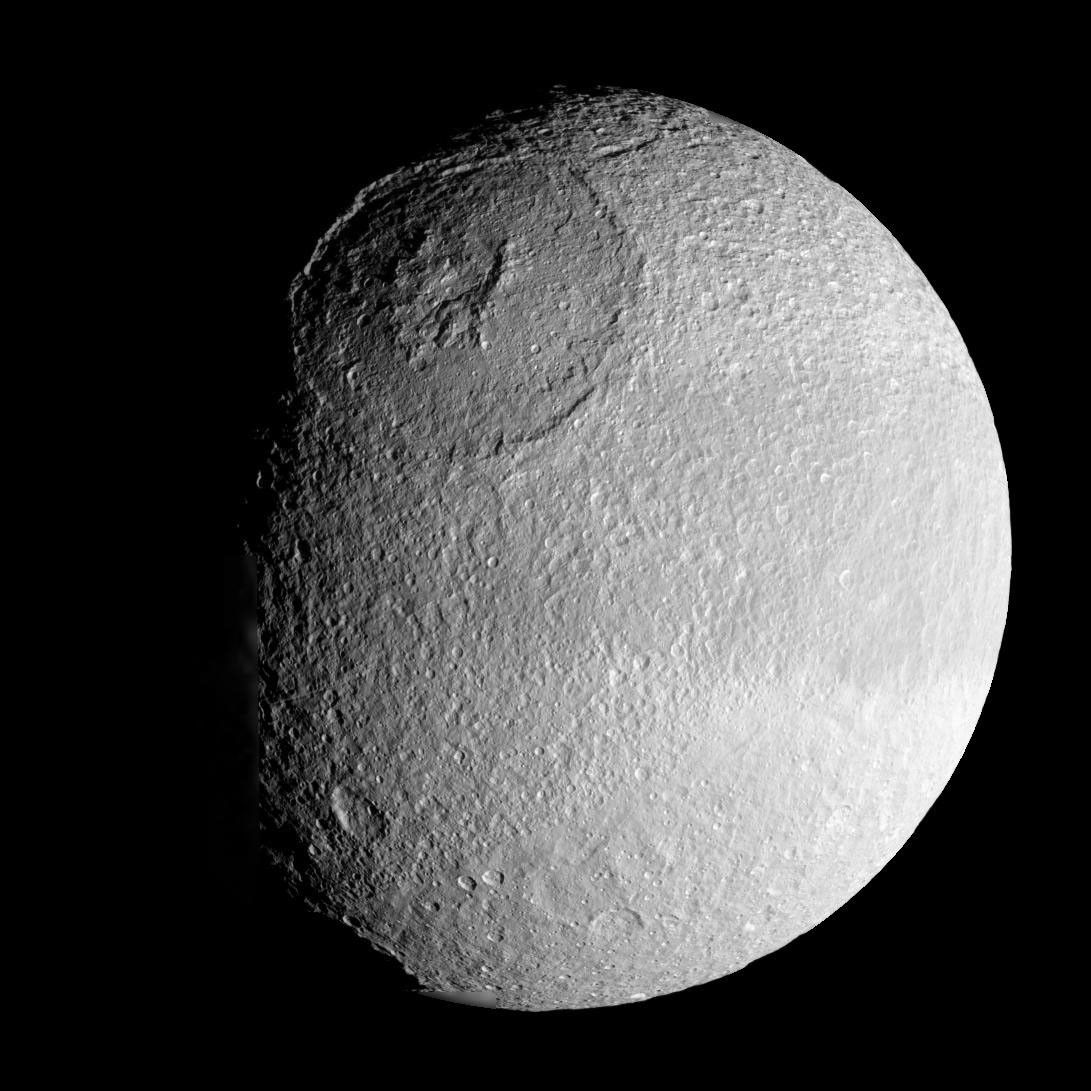Odysseus Crater on Tethys: Moon of Saturn
| Credit | NASA/JPL/Space Science Institute |
|---|---|
| Historical Date | August 30, 2007 |
| PIA Number | PIA08400 |
| Language |
|
Mosaic view of Odysseus crater on Saturn's moon Tethys captured by NASA's Cassini mission to Saturn.
The crater (280 miles across or 450 kilometers across) is a remarkably well-preserved example of an ancient multi-ringed impact basin: The outer ring is defined by steep, cliff-like walls that descend to generally broad internal terraces. The inner ring is formed by a prominent, crown-shaped, 88-mile (140-kilometer) diameter circular band of icy mountains. Multi-ring basins are seen on rocky bodies as well as icy ones.
The complex internal structure and multi-ringed nature of these very large basins are believed to arise from the rebound of intense shock waves that penetrated the body at the time of impact.
Tethys is 665 miles (1,071 kilometers) across.
This mosaic was assembled from four clear filter, narrow-angle camera images. The view is an orthographic projection centered on 3 degrees south latitude, 119 degrees west longitude and has a resolution of 572 meters (0.35 mile) per pixel. An orthographic view is most like the view seen by a distant observer looking through a telescope. North is up.
The view was obtained by the Cassini spacecraft on Aug. 30, 2007, from a distance of approximately 97,000 kilometers (60,000 miles) and at a sun-Tethys-spacecraft, or phase, angle of 51 degrees.



























